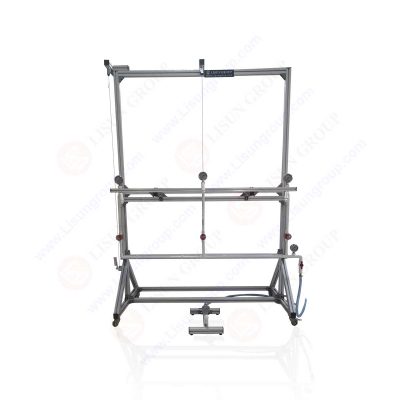

Abstract
The UL Water Spray Test Device is pivotal for evaluating the water resistance of electronic and electrical products, lighting fixtures, electrical cabinets, and other components. This paper focuses on the operational principles, standards compliance, and applications of the LISUN JL-UL UL Water Spray Test Device. Detailed specifications, test procedures, and sample results are discussed, supported by relevant data tables and diagrams.
1. Introduction
Water resistance is a critical attribute for products used in environments where exposure to rain or water is inevitable. The UL Water Spray Test Device ensures that products meet stringent safety and performance standards, protecting against potential failures caused by water ingress. This device simulates rain conditions as per UL 1598 and other international standards.
The LISUN JL-UL UL Water Spray Test Device is specifically designed to comply with UL standards, ensuring precise and repeatable testing. This paper explores its design, functionality, and the benefits it offers for testing various products.
2. Overview of the UL Water Spray Test Device
2.1 Design and Components
The LISUN JL-UL UL Water Spray Test Device consists of:
• Water spray nozzles: Precisely calibrated to simulate rainfall intensity.
• Rotary table: Allows uniform exposure of the product under test.
• Control panel: Provides accurate control over water pressure, spray angle, and test duration.
• Enclosure: Ensures containment of water spray for safety and cleanliness.
2.2 Standards Compliance
The device adheres to the following standards:
• UL 1598: Luminaires safety standard.
• IEC 60529: Degrees of protection provided by enclosures (IP Code).
• ISO 20653: Road vehicles’ protection against environmental conditions.
3. Operating Principles
The UL Water Spray Test Device operates by spraying water at specific pressures and angles to replicate real-world rain conditions. The test process typically includes:
• Mounting the sample on the rotary table.
• Setting parameters such as spray angle (e.g., 90° or 45°) and water pressure.
• Activating the spray system to expose the product to water for a predefined period.
The system is designed to detect any water ingress or performance degradation during or after the test.
JL-UL_UL Water Spray Test Device
4. Applications
4.1 Electronics and Electrical Products
The device tests products such as:
• Switchboards
• Circuit breakers
• Outdoor electronic displays
4.2 Lighting Fixtures
Ensures that outdoor luminaires, such as streetlights and floodlights, meet IPX3 and IPX4 ratings.
4.3 Electrical Cabinets and Components
Tests the resistance of enclosures to water ingress, ensuring operational integrity in adverse conditions.
5. Test Results and Analysis
5.1 Sample Results
A comparative test was conducted on two lighting fixtures under identical conditions using the UL Water Spray Test Device.
Parameter
Fixture A
Fixture B
Spray Angle (°)
45
45
Water Pressure (kPa)
50
50
Exposure Time (min)
10
10
Water Ingress
None
Detected
5.2 Data Analysis
Fixture A successfully met the required standards, while Fixture B exhibited water ingress, highlighting design deficiencies.
6. Advantages of the LISUN JL-UL UL Water Spray Test Device
• Precision: Advanced nozzles ensure accurate replication of rain conditions.
• Flexibility: Adjustable settings accommodate diverse test requirements.
• Durability: Built with corrosion-resistant materials for extended lifespan.
• Compliance: Meets multiple international standards, making it suitable for global markets.
7. Conclusion
The UL Water Spray Test Device, particularly the LISUN JL-UL model, is an essential tool for ensuring the durability and reliability of products exposed to wet conditions. Its ability to simulate real-world rain scenarios allows manufacturers to optimize designs, enhance safety, and meet international standards.
For more details on the LISUN JL-UL UL Water Spray Test Device, visit the official product page. https://www.lisungroup.com/news/technology-news/ul-water-spray-test-device-ensuring-the-reliability-of-electrical-and-electronic-products-under-simulated-rain-conditions.html


Comments
Post a Comment